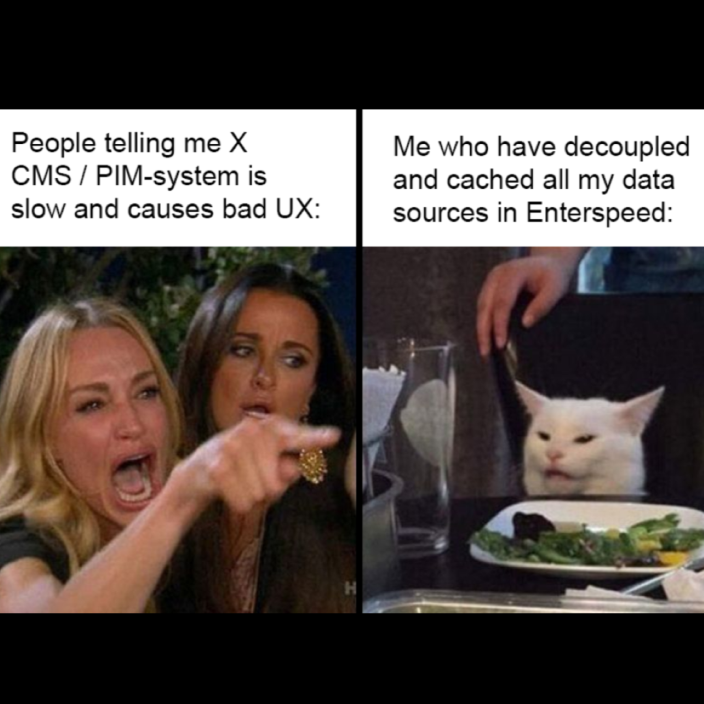The perfect middle layer is the one you don’t notice




The best web solutions are often the ones that seamlessly integrate into your existing systems, enhancing performance without drawing attention to themselves. This is the essence of a perfect middle layer, too – it works quietly in the background, ensuring everything runs smoothly.
Read more 👉 Content Federation: What it is – and why you need it
A middle layer, in our case often referred to as a content federation layer, DXC, DXO, or DIHub, acts as a bridge between your backend systems and frontend applications. It orchestrates your headless, decoupled, and composable tech stack and provides your frontend developers with easy API connectivity to any frontend framework.

For instance, a company using multiple CMSs can use a middle layer to unify content delivery, making it easier for developers to access and display content consistently across different platforms.
See a bit more about the history of the middle layer👉 The middle layer is the new playing field
Once your tech stack is developed and your APIs have been created, there shouldn’t be much reason to actually contemplate your middle layer too often. The provider – if you’ve opted for an out-of-the-box (OOTB) solution that is – should handle all maintenance and upgrades, and all you notice is your well-functioning APIs.
Alas, there are two main scenarios where you might still be forced to notice your middle layer:
1: If it doesn’t work: If your middle layer for some reason doesn’t perform, it can have a major impact on your whole data infrastructure. For example, if the middle layer fails to synchronize data between your backend and frontend, it can lead to outdated or missing information on your website.
2: If it’s too expensive: Too often, exploding licencing or operational costs come as a very unpleasant surprise. If you’ve built the middle layer yourself – or had an agency do it for you – you might be surprised of the amount of hours it takes to maintain and update it. If you’ve chosen an off-the-shelf middle layer some of them have a pricing structure that can get out of hand if you add new sources, scale up on requests etc. Additionally, a poorly designed middle layer too often leads to rising maintenance and cloud costs, further straining your budget.
Check out how to reduce licence fees 👉 Use case: Reduce licence fees
The value of compliant, secure, and efficient infrastructure is especially evident when something isn’t working. But why not get ahead of it? There's a few things to consider that we bet will set you up pretty good:
Scalability: Ensure your middle layer can handle increased loads as your business grows.
Security: Does your middle layer offer security by design? Implement robust security measures to protect data as it moves between systems.
Performance monitoring: Regularly monitor performance to catch and address issues early.
Cost management: Keep an eye on costs and optimise where possible to avoid budget overruns.
Read more about Enterspeed 👉 What is Enterspeed all about?
At Enterspeed, we've created a middle layer that you won’t even notice – because that’s the point. Our tech agnostic platform is designed to integrate seamlessly with your existing solutions, providing all the benefits of headless architecture without the need for a complete system overhaul.
Our low-code schema designer lets you model your content however you like, combining data from multiple sources into a single view. This means you can fetch all your data via a single API endpoint, reducing the need for powerful servers and complex infrastructure.
You can also dive a bit more into Enterspeed as the integration layer in Jamstack in this blogpost 👉 Pros and cons of frontend as integration layer in Jamstack

Thrown into tech marketing and loving it. Mother of two, wife of one, runner, and reader of romance.
© 2020 - 2025 Enterspeed A/S. All rights reserved.
Made with ❤️ and ☕ in Denmark.